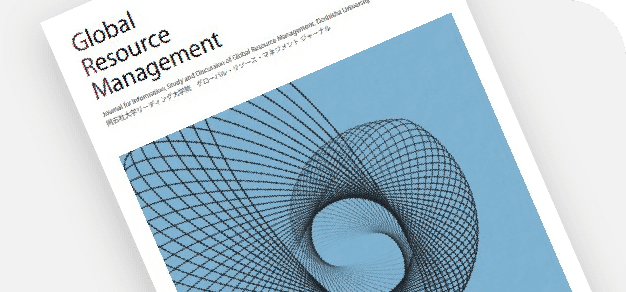Recent Activities
On Ethiopia’s Return to Civil War: Its Background, Causes, Prognosis, and Prospects for Resolution
2021/01/14
----------------------------
Date: December 21,Monday 2020
Time: 10:00 A.M.
Webinar
----------------------------
■Commentary
Written by Iyas Salim
Introduction and remarks by GRM’s Global Situation Room & The Research Center for Human Dignity.
The government of Ethiopia launched a war on the northern region of Tigray on the 4th of November. Headlines around the world highlighted the possibility of Ethiopia’s return to a civil war. Since the beginning of last month, November, thousands of people are believed to have been killed and nearly one million people fled their homes during air strikes and ground battles in Tigray, north of Ethiopia. Tigray region is home to six million people. Now it is in desperate need of food and medicine with some one million people now thought to be displaced. Ethiopian Federal troops seized Tigray’s capital Mekelle on November 28 and now control the main towns in the region which remains largely cut off from the world. Nearly 50,000 Ethiopian refugees are now sheltering in neighboring Sudan. Some resist being moved to a camp away from the border in the hope that missing family members, separated by the fighting, can be found. Amnesty International is investigating potential war crimes, including hundreds of people hacked to death. The conflict threatens the possible destabilization of Ethiopia, Africa’s second most populous nation. In the meantime, this war could spread in the wider region of the horn of Africa, dragging Eritrea and Sudan and UAE into an international conflict.
The current prime minister of Ethiopia, Abey Ahmad, pronounced strong words against war during his acceptance speech of winning the Noble peace prize exactly a year ago, in Dec. 2019. He said, “War is the epitome of hell for all involved.” However, some Ethiopian citizens criticize the prime minister for not living up to his promises, instead of choosing peace, he is choosing war. How did the fighting start? What is the conflict really about? To answer these questions and to understand the conflict in Ethiopia, we invited guest speake Mr. Alemayehu Weldemariam who is scholar and academic, writing and researching on Ethiopian affairs.
Lecture main points and concluding remarks, by Mr. Alemayehu Weldemariam.
Ethiopia has returned to civil war after almost 30 years since the termination of the 17-year-long civil war that ended in 1991 with the toppling down of the Derg regime by the coalition of ethno-nationalist liberation movements called the Ethiopian People’s Revolutionary Democratic Front (EPRDF), spearheaded by none other than the Tigray People’s Liberation Front (TPLF). The war has now entered its third week. On 4 November 2020, Prime Minister Abiy Ahmed of Ethiopia formally declared war on Tigray in response to an alleged an attack on ENDF’s Northern Command by Tigray’s Special Forces, now called Tigray Defense Forces. Although there’s nothing civil about war, Ethiopia is technically in a state of civil war, despite official statements to the contrary. Prime Minister Abiy described the situation as a “law enforcement operation ...aimed at guaranteeing peace and stability once and for all by bringing perpetrators of instability to justice.” A civil war is, in political science parlance, an “ “armed combat within the boundaries of a recognized sovereign entity b/n parties subject to a common authority at the outset of the hostilities.” (Stathis Kalyvas)
As Kalyvas puts it laconically, “Civil war often refuses to speak its name. Euphemisms abound: one hears of “troubles,” “emergency,” “situation,” or simply “violence.”” Abiy Ahmed’s use of “law enforcement operation” should not mean little more than another euphemism to civil war.
What lies at the heart of such linguistic dispute is an extension of the nature of the conflict itself. As Kalyvas notes, “the very use of the term is part of the conflict itself, conferring or denying legitimacy (or status equality) to the parties in the conflict.” He goes on to write, “ During the war, the term is usually sought out by insurgents in search of legitimacy, and denied by incumbents who label their opponents “bad guys,” bandits, criminals, subversives, or terrorists – and describe the war as banditry, terrorism, delinquent subversion, and other cognate terms. In fact, the repudiation of the term is common to all incumbent regimes, leftist and rightist, authoritarian and democratic alike. Following a civil war’s end, the term is often claimed by the vanquished in their quest for political redemption and inclusion, and denied by the winners who seek the permanent exclusion of the losers from the political, or even national, realm. The spillover effect of this semantic contest has affected research on the topic, as definitions of civil war have tended, until recently at least, to hinge on the war’s outcome.”
However, the scope of the war is quickly changing, as it draws in Eritrea and the UAE. The war wasn’t caused by the alleged TPLF attack on the Northern Command as the government would have us believe. Federal government special military operations that have gone awry precede TPLF’s operation to neutralize the threat Abiy posed through the Northern Command. Whatever the immediate causes might be, the major cause is to be found somewhere else. To my mind, the major cause of the war is a conflict between Abiy Ahmed and TPLF over the scale and speed of Abiy’s reform programs:
(1) Abiy’s rush to ram through EPRDF to form the Prosperity Party was one of the bone of contentions; the priority for Abiy should have been to iron out differences within the EPRDF itself before taking the affiliates on board. The merger plan wasn’t novel. It was first proposed by the late PM Meles Zenawi; even if EPRDF was going to eventually merge, it was not going to become anything like Abiy’s PP, which fails to espouse a clear ideology or lacks in a political program;
(2) Abiy’s rhetoric of unity and unconstitutional actions such as the establishment of the boundary and identity commission, coupled with the rushed merger of the EPRDF, which served only as a vehicle for interfering in the constitutionally enshrined self-determination rights of the NNPs, exposed his intention to dismantle the multinational federation and supplant it by a unitary state;
(3) Postponement of the 2020 national and regional elections escalated to campaigns of mutual brinkmanship and delegitimization;
Therefore, what’s at the root of this conflict between Mekele and Addis Abba is Abiy Ahmed’s overvaulting ambition for power consolidation and desire to recreate the Ethiopian state in his own image. The aim of the war is the complete subjugation of Tigray by the federal government. The threat to Tigray is none but existential. What the objective condition in Ethiopia at present justifies is not less multinational federalism, but more of it. The war will have produced a humanitarian crisis of biblical proportions unfolding against a backdrop of complex ethnic and power dynamics, which will end up destabilizing not only the country of 110 million, but also the entire Horn of Africa region unless checked in time.





